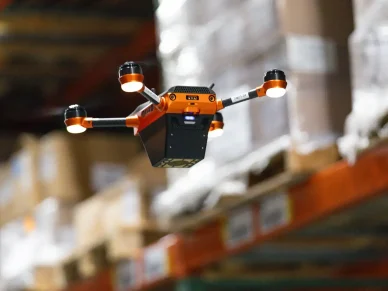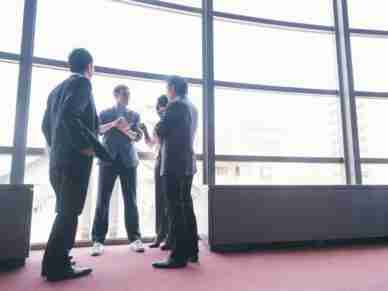Starting a sustainability journey can be overwhelming, but Bon Appétit Management Company’s Maisie Ganzler lays out the path

There is no finish line when it comes to operating a business sustainably. No matter how much effort and energy a company puts in, there’s no point at which the leadership can sit back and declare, “sustainability accomplished.” On one hand, this can be daunting.
“Even the things that you think are done, the initiatives that you’ve crossed off the list and that you’ve achieved, tend to fall out of being done,” says Maisie Ganzler, a strategic advisor for Bon Appétit Management Company and the author of the sustainability leadership handbook “You Can’t Market Manure at Lunchtime.” “Whether it be a global pandemic or a more minor crisis in your world, you have to continue to go back to checking even those things that you’ve crossed off as done and make sure that they are in fact still done.”
On the other hand, it means there is always something a business can do to become more sustainable and get the dual win of making meaningful change for the environment or community and earning market credit for the effort.
“Sustainability is always in the future and about the future,” she said.
Taking the Steps

There are essentially four different audiences a company is speaking to when promoting its sustainability initiatives. There’s the general public, where there will be some mix of positive response and people saying, “You’re catering to the idiot elite,” as someone wrote in response to the release of Bon Appétit’s low-carbon diet. There’s also the investor community, where again you might find a mix of backlash around ESG but a lot of funds and individuals interested in sustainable investing. Then there’s the internal audience of employees. For them, sustainability initiatives are a morale booster and an important tool for companies to attract and retain talent. Lastly, there are organizations dedicated to sustainability that can be champions of a business or big detractors depending on what promises you make and whether you live up to them.
“I’m clearly not about (green)hushing,” Ganzler said. “I’m about talking but knowing who you’re talking to and why.”
She offers five steps for companies to take in getting sustainability efforts off the ground. Step 1 is picking which issues to focus on. You can find these in your own personal passions, feedback from customers, looking at competitors, or soliciting advice from advocacy groups. The next step is to align your company mission with sustainability efforts so that the main purpose of the business also supports sustainability efforts, or at least helps avoid falling behind on them. To do that, you need to be able to measure and track whether you’re meeting goals.
“That seems simple, but we have these entrenched systems, literal software systems, that may not have a field for you to flag” how much of a product you’re buying or its provenance, she said. “That’s not very sexy, but that’s where a lot of sustainability work is done, in creating those tracking systems.”
Step 4 is having a plan to respond publicly and internally when things go wrong, which they inevitably will. The final step is to tell your story.
“We want to get market credit for these actions. We are trying to make meaningful change, but we are also trying to make business benefit.”
Radical Transparency

While it’s exciting and inspirational to make a sustainability commitment, where companies tend to fall short is in doing that unsexy work of measuring that commitment and aligning their systems to ensure the goal is met. You can’t know if it is met unless you’re measuring it.
“It’s likely that if you do set a number of ambitious targets, at some point you will fall short. If you’re measuring, you will learn that you’ve fallen short,” Ganzler said. “Then the key there is to be honest and open about that and redouble your efforts versus pretending that you’ve met a goal that you haven’t or hoping nobody will really ask you.”
Radical transparency, both internally and externally, is the key. For example, after publicly stating that Bon Appétit Management Company was eliminating gestational crates from its pork supply chain, Ganzler learned that a supplier had misled her and that wasn’t true. Her first call was to the Humane Society of the United States, letting them know what she’d learned and the steps she was taking to make it right.
“In that case, the Humane Society became my partner in problem-solving rather than the external NGO criticizing us for falling short.”
As important as tracking systems like the Carbon Disclosure Project are, it’s just as important to get to know your suppliers personally, meeting with them at their facilities. Ganzler shared how during such a meeting, she and Bon Appétit Management Company co-founder Fedele Bauccio noticed a large amount of lettuce being harvested was left behind in the field. That led to a new waste reduction strategy that lowered emissions as well.
“It’s being out there talking to people, learning, asking questions,” she said.
Starting Up

Embarking on a sustainability journey can feel massive and scary, Ganzler said. It’s difficult to wrap your head around complexities like Scope 3 emissions and other aspects of sustainability you may have never even thought of.
“The real thing to do is start,” she said.
An easy place to do that is in a company’s waste stream. That’s an area in every business, regardless of size, where sustainability measures can be implemented.
“There’s nobody that’s pro-waste, so you’re not going up against any naysayers,” she said. “Everybody wants to reduce waste, and it’s also going to have a great financial benefit in most cases.”
No matter how efficient your current operations are, every business has waste somewhere, so there’s a concrete problem to tackle and deliver Ganzler’s dual win of meaningful change and market credit. She shared the example of chef Norbert Niederklofer, whose The St Hubertus restaurant at the Hotel Rosa Alpina earned three Michelin stars with his “Cook the Mountain” philosophy of using only ingredients sourced from the surrounding Dolomites. With the right alignment of mission, businesses can reach the pinnacle of their industries and achieve ambitious sustainability goals.
“The real thing is the first step, which is just starting,” Ganzler said.
Do that, and the rest of the sustainability journey will follow.
















Leave a Reply